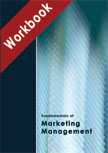Coca-Cola India in 2004 - Marketing Strategy |
ICMR HOME | Case Studies Collection Please note: This case study was compiled from published sources, and is intended to be used as a basis for class discussion. It is not intended to illustrate either effective or ineffective handling of a management situation. Nor is it a primary information source. |
||
IntroductionIn March 2003, a message from Coca-Cola's global headquarters in Atlanta, United States, created a lot of excitement in the Indian subsidiary. Coca-Cola India (CCI), had been awarded the Woodruff award1 for outperforming the dozen-odd emerging markets of Coca-Cola worldwide in growth and profitability during 2002. The comeback was remarkable for the global cola major. In January 2000, the company had stated that its investment in India had yielded disappointing returns.
Background NoteCoca-Cola, reentered India in 1993, after having withdrawn from the country in the late 1970s, in the wake of the Foreign Exchange Regulation Act (FERA) of 1973. Coca-Cola's reentry was driven both by competitive factors and the company's own global plans. Global rival Pepsi had entered India in 1990 and by 1993 had captured a 25% market share. Coca-Cola India in 2004 - Marketing Strategy - Next Page >>
1] Named after Robert W Woodruff, one of Coca-Cola's most influential chairmen who led the company for over 50 years. |
Case Studies Links:-
Case Studies,
Short Case Studies,
Simplified Case Studies.
Other Case Studies:-
Multimedia Case Studies,
Cases in Other Languages.
Business Reports Link:-
Business Reports.
Books:-
Textbooks, Work Books, Case Study Volumes.



